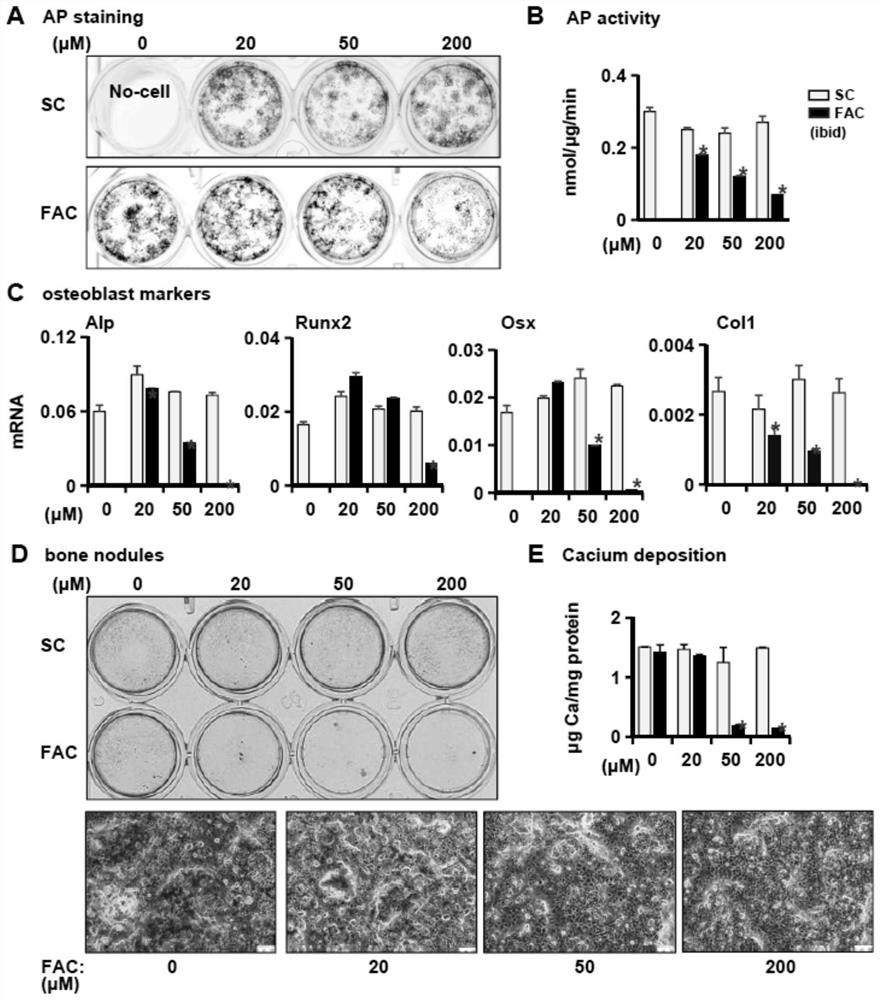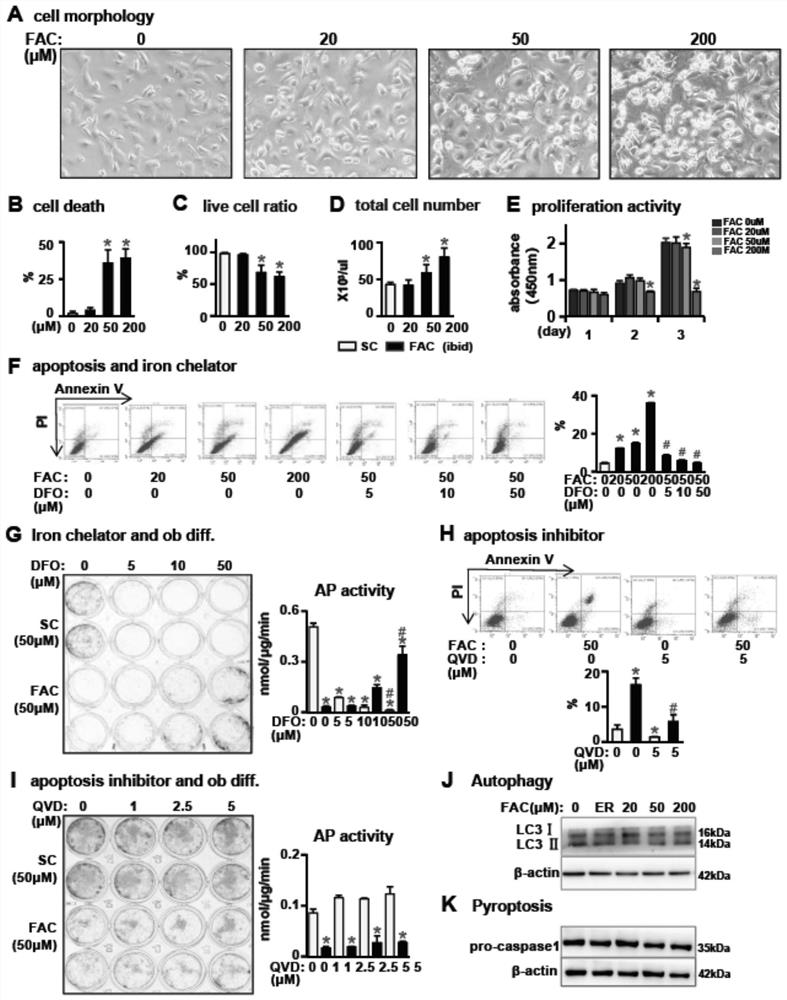Application of ferroptosis inhibitor in preparation of medicine for preventing or treating osteoporosis or bone loss caused by iron overload
A technology for osteoporosis and inhibitors, applied in the field of application of ferroptosis inhibitors in the preparation of drugs for the prevention or treatment of osteoporosis or bone loss caused by iron overload, which can solve the problems of side effects and low specificity of drug use , to achieve the effect of good application prospects
- Summary
- Abstract
- Description
- Claims
- Application Information
AI Technical Summary
Problems solved by technology
Method used
Image
Examples
Embodiment 1
[0077] Iron is one of the essential trace elements for the human body, but excessive accumulation of iron in tissues or cells can lead to diseases.
[0078] In this example, ferric ammonium citrate (FAC) is used to treat bone marrow stromal cells, and the concentration is selected from physiological concentration to the highest serum iron concentration range (i.e. 110 μg / dl to 1100 μg / dl) of iron overload patients found clinically at present, and the settings are 20 μM, 50 μM, 200 μM The microenvironment of iron overload was simulated in vitro, and sodium citrate was used as the control. Higher iron concentrations were not tested in this example because higher iron concentrations are not achievable in iron overload disease. FAC effectively mimics non-transferrin-bound iron (NTBI) in iron-overloaded patient plasma. Alkaline phosphatase (ALP) is a marker of early osteogenic differentiation. ALP activity plays a vital role in the early osteogenic process. Therefore, alkaline pho...
Embodiment 2
[0081] Preliminary experiments have found that the proliferation of iron-overloaded BMSCs is affected, and a large number of cells die, and its impact in iron-overloaded patients cannot be ignored. Therefore, in this embodiment, the morphological observation is directly performed through a high-definition microscope.
[0082] In this example, the effects of iron overload on cell viability and cell death of BMSCs were simultaneously studied. Cell viability was checked by CCK-8. On the 3rd day after FAC treatment, the percentage of cell death and cell proliferation were directly counted by placenta blue staining (the number of cells contained in 1 ul volume under the same conditions).
[0083] The experimental results showed that with the increase of FAC concentration, the morphology of BMSCs changed irregularly, with more shrunken cells and visible floating cells, especially at higher FAC concentration (ref. figure 2 shown in A). Cell viability decreased (see figure 2 Show...
Embodiment 3
[0091] The inventors provide whether ferroptosis, a new regulated form of cell death, is involved in the effects of iron overload on bone marrow mesenchymal stem cells. Initially, the inventors discovered that the iron transport-related protein DMT1, Tfr1, is involved in the intracellular Fe 2+ The expressions of divalent metal transporters and membrane proteins were significantly up-regulated by iron overload ( image 3 shown in A). Fluorescent probes were then used to detect intracellular Fe 2+ , showing intracellular Fe 2+ significantly increased in a dose-dependent manner ( image 3 shown in B).
[0092] Since excess intracellular iron may generate ROS through the Fenton reaction leading to ferroptosis, the cell-penetrating probe H2DCFDA was further used to assess ROS. The results showed that compared with the untreated group, the ROS level in the FAC-treated group was significantly increased ( image 3 shown in C).
[0093] Lipid peroxidation products (LPO), anothe...
PUM
 Login to View More
Login to View More Abstract
Description
Claims
Application Information
 Login to View More
Login to View More - R&D Engineer
- R&D Manager
- IP Professional
- Industry Leading Data Capabilities
- Powerful AI technology
- Patent DNA Extraction
Browse by: Latest US Patents, China's latest patents, Technical Efficacy Thesaurus, Application Domain, Technology Topic, Popular Technical Reports.
© 2024 PatSnap. All rights reserved.Legal|Privacy policy|Modern Slavery Act Transparency Statement|Sitemap|About US| Contact US: help@patsnap.com










